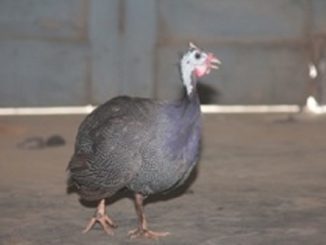Introduction
Poultry industry in India is one of the fastest growing segments of the Agricultural sector and it is also a profitable agro industry which can reduce the problems of unemployment especially in rural area. India has emerged as the third largest in egg and fifth largest in poultry meat production in the world (20th Livestock census, 2019). As per 20th Livestock census, poultry population has increased from 729.21 million to 851.81 million during the year 2012 to 2019. Feed is a major factor affecting net income from the poultry business, because approximately 70-80% of the total cost of poultry production is due to feed (Asghar et al., 2000). India was among top producing countries whose production has increased substantially and it reached about 217% (FAO, 2007). The growing world food crisis has presented a challenge to poultry industry, especially in India; to investigate the possibilities of utilizing other potential energy feed sources as a replacement for maize grain.
The major portion of the crop is now diverted for purposes such as biofuel, brewery and starch industries, apart from its growing spate in human consumption. Maize of course, is the major feed ingredient in broiler diet with the inclusion level of around 60% in the total diet. In India, because of only a marginal increase in maize production coupled with poor production per hectare, has widened the supply and demand gap which has put lot of pressure on maize price during most of the year. Because of this, it has become quite essential to identify and evaluate less expensive, readily and locally available energy sources for poultry feeding in the place of maize. Coarse cereals like bajra , ragi , jowar etc are abundantly available in most parts of India.
Sorghum
Jowar or Sorghum is comparable with maize in terms of protein (9-11%) and energy (2800-3000 kcal/kg) and it can replace maize up to 70%, but its tannin content (above 0.5% level) may limit its safe inclusion. White variety (low tannin) is preferred over dark or brown colored (high tannin) variety. After processing sorghum it improves availability of nutrients. Jowar can equal corn in feeding value for broiler chicks when milled to their optimum particle size.
Bajra
Bajra protein has more lysine, methionine and tryptophan than other grains. It is recognized as low fat diet. It contains thiamin (vitamin B1) and iron. Bajra is well adapted to production systems characterized by low rainfall, low soil fertility and high temperature and thus can be grown in areas where other cereals crops, such as wheat or maize would not survive. Bajra is also called Pearl Millet and contains 12-14 % protein and 2800- 2900 kcal/kg energy with its inclusion level @ 30% replacing 50% maize in the diet of broilers or layers.
Barley
The barley is less palatable due to more crude fiber (6-7%). It provides less energy (2700-2900 kcal ME/kg) when compared to maize. The protein content in barley is 9-10%. An anti-nutritional factor known as a-D-glucans present in barley results in sticky droppings in broilers and layers. Soaking in water and enzyme (α- glucanase) supplementation can enhance its nutritive value. Chicks are sensitive to barley; however, it can be used at the rate of 20% in layer diet.
Wheat Bran
Wheat bran is the outer seed coat from flour mills. It contains high in fiber, low in metabolizable energy (ME). The ME can be increased up to 10% by simple steam pelleting, and the availability of phosphorus up to 20% under the same condition. Wheat bran can be added in poultry diets up to 5–8% without negative effect. Wheat bran contains xylan which may lead to increase viscosity in the small intestines. Therefore, xylanase supplementation is recommended for broilers fed more than 15% wheat bran in their diets.
Distillers Dried Grains With Solubles (Ddgs)
It can be defined as a product obtained after ethanol extraction by distillation from the yeast fermentation, and drying at 75% of the resultant. Including DDGS in poultry diets to replace part of yellow corn and soybean meal have shown positive results in terms of growth performance. The main limitation of using DDGS in monogastrics is the variability of its nutrients content and availability.
Salseed Meal
The seed meal is a forest-origin feedstuff and contains 9-10% protein and 2300-2800 kcal ME/kg energy. Because of its high tannin content (12-13%), it cannot use in poultry rations in higher quantity. However, a very low level of salseed meal up to 3% can be used in the diet of poultry in raw form.
Conclusion
The use of alternative feedstuffs nowadays in poultry sector is going to be increased because of their nutritive quality and as a cheap source of energy. In addition, these unconventional feedstuffs are not competitive with humans. At the same time, their inclusion to poultry diets can replace portions of yellow corn. Therefore, reduce the cost of production.
How useful was this post?
Click on a star to review this post!
Average Rating 5 ⭐ (102 Review)
No review so far! Be the first to review this post.
We are sorry that this post was not useful for you !
Let us improve this post !
Tell us how we can improve this post?
Authors
-

M.V.Sc Student, Department of Animal Nutrition, College of Veterinary and Animal, Sciences, GBPUAT, Pantnagar, Uttrakhand, India
-

Assistant Professor, Department of Animal Nutrition, College of Veterinary and Animal Sciences, GBPUAT, Pantnagar, Uttrakhand, India
-

Assistant Professor, College of Veterinary and Animal Sciences, GBPUA&T, Pantnagar
-

Professor, Department of Animal Nutrition, College of Veterinary and Animal Sciences, GBPUAT, Pantnagar, Uttrakhand, India
-

M.V.Sc Student, Department of Animal Nutrition, College of Veterinary and Animal, Sciences, GBPUAT, Pantnagar, Uttrakhand, India
-

M.V.Sc Student, Department of Animal Nutrition, College of Veterinary and Animal, Sciences, GBPUAT, Pantnagar, Uttrakhand, India





Be the first to comment